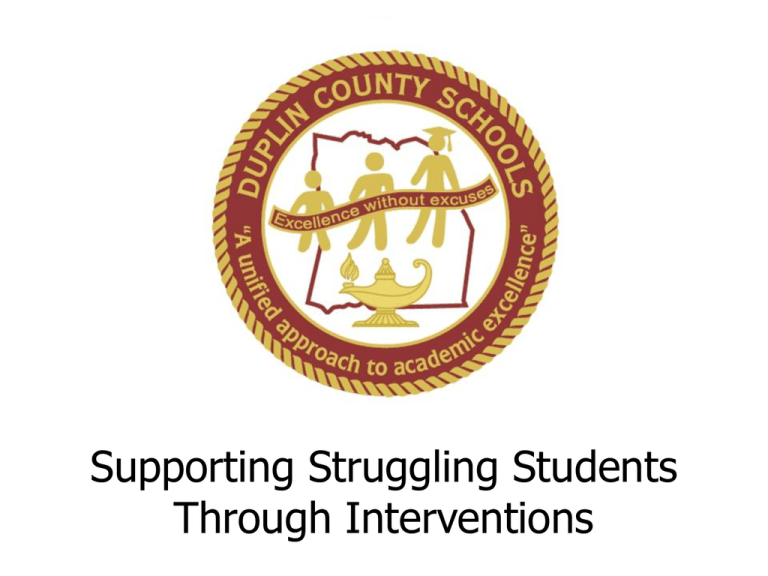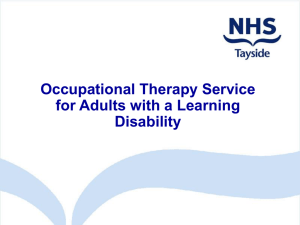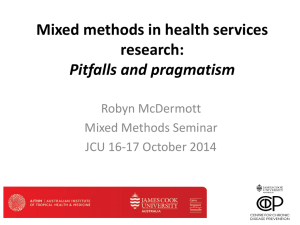PPT.Interventions - Duplin County Schools
advertisement

Supporting Struggling Students Through Interventions Teach the Children Click on the picture to show video Five Steps to Developing a Proactive Intervention Plan • • • • • Identify mastery thresholds Establish red flags Develop formative assessments Select appropriate interventions Monitor your plan Mastery Baselines • Mastery is not a single point of success, but a range of successful behaviors. • Mastery is determined by the teacher and what the standards and curriculum say the students need to know and how well they need to know it. • Mastery is determined by first looking at a grade baseline for assessments. • Mastery is also determined through other items that may help you develop a fuller picture. Mastery Target Minimal Basic No Understanding Mastery Proficiency Red Flags • “Red Flags” are early-warning signals that students are headed for a destructive struggle and should be: – – – – very clearly defined hard to ignore trigger action focused only on academic concerns, not student behaviors. • Example: Students that miss more than 2 problems on a 10 problem math test. Case Study • Read the following case study. • Assuming that Principal Mathers has no additional resources to hire after-school tutors, how can he best address this problem. Here’s How • Read how Principal Mathers and his school are confronting the question. • Discuss how this aligns with your decision to deal with the issue. What is Effective Support? Effective Support is…. • Ongoing • Proactive • Targeted • Accelerative • Learning-focused • Monitored • Managed by a teacher as advocate Effective Support is Not.. • As Needed • Reactive • Generalized • Remedial • Behavior-focused • Random • Imposed by a teacher as adversary Select Appropriate Interventions • Interventions provide targeted tools to address a specific concern signaled by a red flag. • The most effective interventions provide a temporary learning support, are made available on an as-needed basis, and are removed when they are no longer necessary Consider Progressive Interventions • Sequencing your interventions so that they progress from least intensive to most intensive gives you options for students who continue to struggle in spite of early supports. • Progressive interventions help students take ownership over their own learning. Rules for Interventions • Interventions should be seamless and unobtrusive. • Interventions should be designed to get students quickly back on track. • Interventions should be systematic. Rules continued • Interventions temporary. • Interventions • Interventions • Interventions intensive should be should be minimal. should be specific. should not be labor Monitor and Gradually Remove Your Supports • Use formative assessments to determine whether supports are working. • Decrease the amount of support you provide for students over time. • Increase the number of steps students must complete on their own. • Decrease the frequency of Support. Instructional Intervention Strategies Handouts • The packet contains suggested interventions teachers can use to support struggling students. • The key is determining when a student is beginning to go into a destructive struggle and to have an intervention plan in place to provide them with immediate support. • Intervention must be proactive! Planning Interventions • Interventions should be a part of the lesson planning process. • Assess what you are teaching and decide what corrective actions will help get my students back on track. • Be proactive and have these ready to implement the minute a student starts a destructive struggle. Questions?







